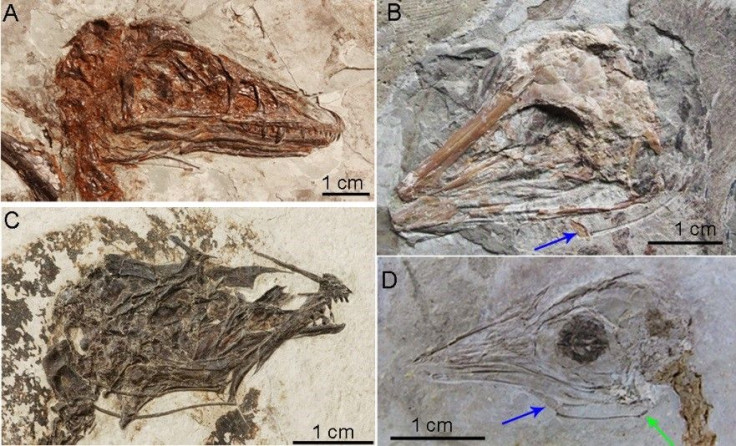T-Rex Didn’t Have Long Stretching Tongue, Unlike Usual Portrayal, Study Reveals

In popular culture, dinosaurs are often portrayed as fearsome beasts with sharp teeth and a tongue wildly stretching from their gaping mouths. Most predators of the Jurassic-era, including the famous Tyrannosaurus rex, have been represented under this image, but a new research reveals a completely different story.
For years, scientists have known that modern-day crocodiles and birds are distant relatives of extinct dinosaurs. The animals are often used as analogs to understand the evolution of their ancestors across different lineages. The latest from researchers at the University of Texas, Austin, and the Chinese Academy of Sciences was also pretty similar but focused specifically on the mouths of ancient predators.
The results of the work came as a major surprise and revealed dinosaurs were not able to stick out their tongues like lizards. "They've been reconstructed the wrong way for a long time," study co-author Julia Clarke said in a statement.
The group found that most extinct dinosaurs had very short hyoid bones, the bone which acts as an anchor and supports the tongue. As a result, in most of the cases, including that of T. Rex, the tongue was rooted to the bottom of the dinosaur’s mouth and nearly immobile, much like how we see in the case of modern-day crocodilians.
“In crocodilians with similarly short hyoid bones, the tongue is totally fixed to the floor of the mouth,” Clarke added.
The researchers made the discovery after taking high-resolution scans of hyoid muscles and bones in 15 modern-day specimens, which included birds like ostriches and ducks, and three crocodiles. Once the photographs were taken, the features seen in the mouths of modern animals were compared with those witnessed in tongue bones recovered from Jurassic-era fossils from northeastern China. These bones belonged to small bird-like dinosaurs or pterosaurs and a Tyrannosaurus rex.
"Tongues are often overlooked. But, they offer key insights into the lifestyles of extinct animals," study lead Zhiheng Li said in the statement.
That said, it is worth noting that the case of pterosaurs was completely different from that of crocs and T. Rex. They found that hyoid bone shapes in ancient bird-like dinosaurs differed a lot from that seen in modern birds.
The groups posit this could be related to their ability to fly. Essentially, as the animals started taking to the skies and their hands transformed into wings, they would have developed new ways of feeding, which probably led to these changes in tongue bones.
"If you can't use a hand to manipulate prey, the tongue may become much more important to manipulate food," Li added. "That is one of the hypotheses that we put forward." However, that theory does not apply to the case of plant-eating dinosaurs, the team added.

The study was published June 20 in the journal PLOS One.
© Copyright IBTimes 2025. All rights reserved.





















